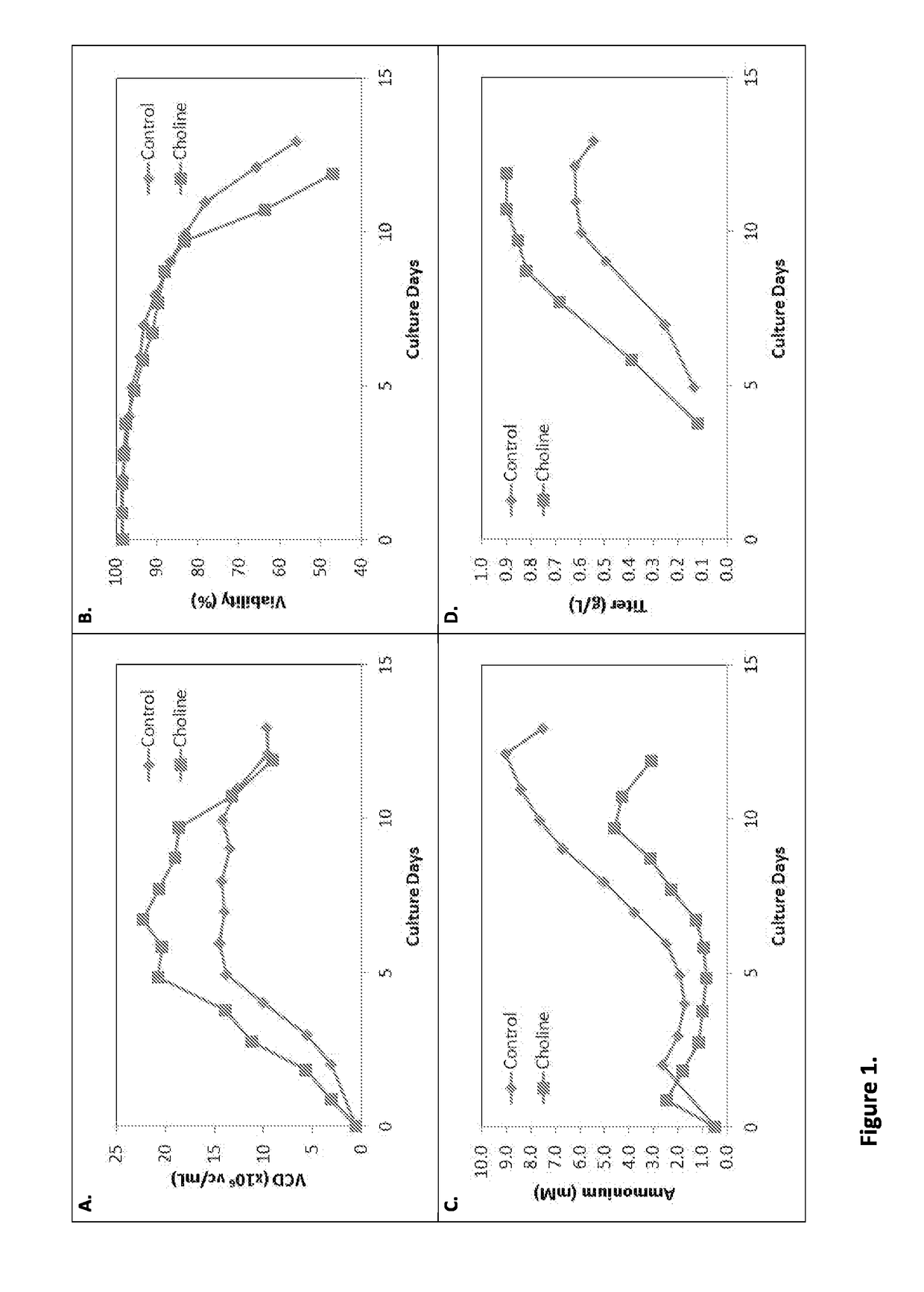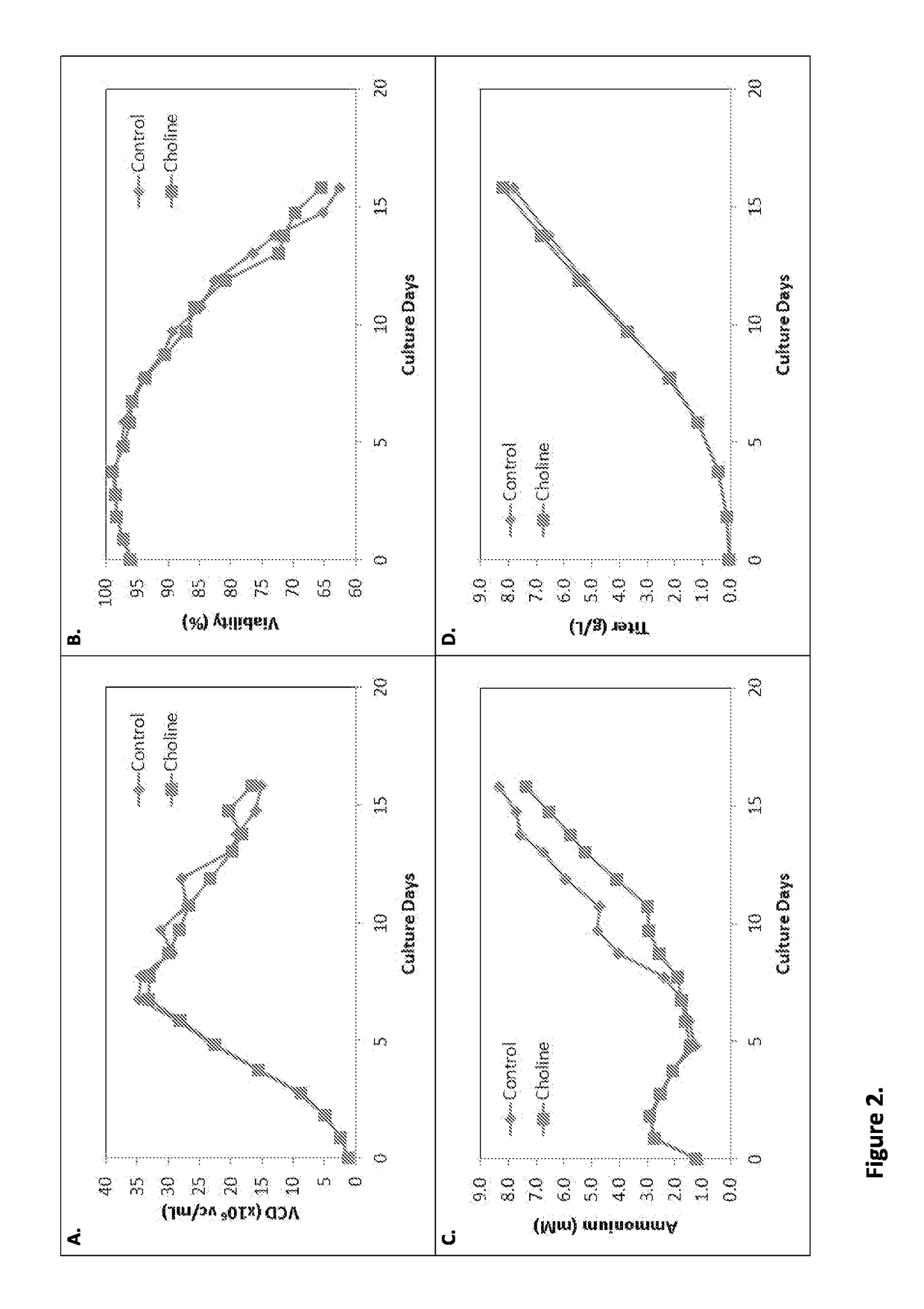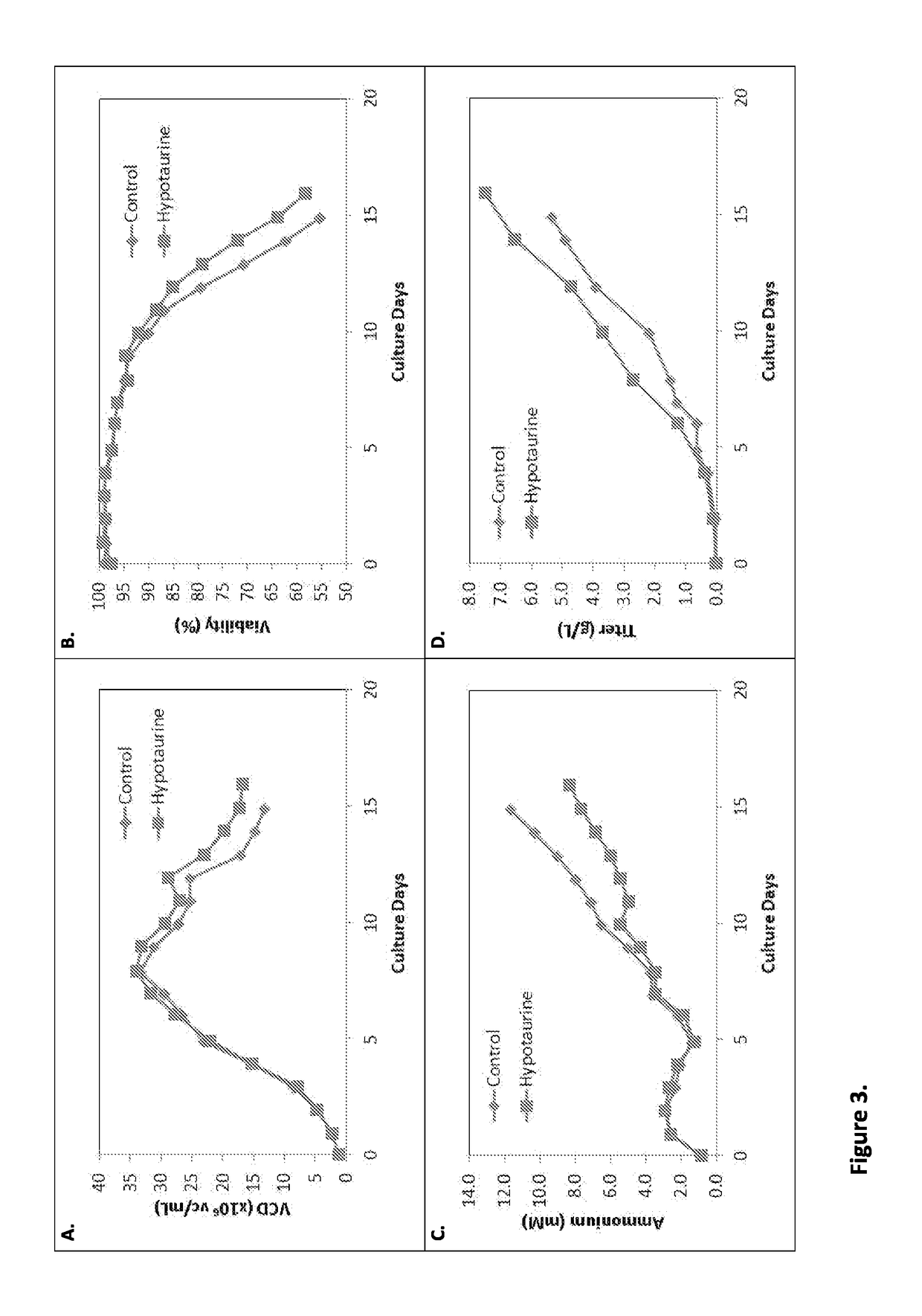Hypotaurine, GABA, Beta-Alanine, and Choline for Control of Waste Byproduct Accumulation in Mammalian Cell Culture Process
a cell culture process and waste byproduct technology, applied in the field of cell culture medium, can solve the problems of toxic waste products accumulation in cultures that have historically been plagued by toxic waste products
- Summary
- Abstract
- Description
- Claims
- Application Information
AI Technical Summary
Benefits of technology
Problems solved by technology
Method used
Image
Examples
example 1
[0216]The impact of different choline levels in the culture on cell density, viability, ammonium concentration and titer was evaluated in Cell Line A (FIG. 1). Cell Line A expressed the polypeptide Neublastin. The control feed medium contained 3 mM choline chloride. The choline feed medium contained 9 mM choline chloride. Feed medium was added daily from Day 2 to Day 12 to the cell culture. As can be seen in FIG. 1, the choline feed medium condition exhibited higher growth and viability (A, B), lower ammonium accumulation (C), and higher titer (D) as compared to the control condition. Initial cell density was one million cells (1e6). The effects of choline were evident starting on Day 3.
TABLE 1Effective choline concentration at Days 3 and 13 in Cell Line A cultures treated with control or choline feed medium.Day 13Day 3 (Effective)Choline Conc. Choline Conc.Cell Line A(mM)(mM)Control1.45 mM0.67 mMCholine3.32 mM0.90 mM
example 2
Choline on Cell Line B
[0217]The impact of different choline levels in the culture on cell density, viability, ammonium concentration and titer was evaluated in Cell Line B (FIG. 2). Cell Line B expressed the polypeptide Lingo. The control feed medium contained 3 mM choline chloride. The choline feed medium contained 18 mM choline chloride. Feed medium was added daily from Day 1 to Day 15 to the cell culture. As can be seen in FIG. 2, the choline feed medium condition exhibited higher growth and viability (A, B), lower ammonium accumulation (C), and slightly higher titer (D) as compared to the control condition. Initial cell density was one million cells (1e6). The effects of choline were evident starting on Day 9.
TABLE 2Effective choline concentration at Days 9 and 16 in Cell Line B cultures treated with control or choline feed medium.Day 16Day 9 (Effective)Choline Conc. Choline Conc.Cell Line B(mM)(mM)Control1.1 mM0.78 mMCholine6.6 mM4.65 mM
example 3
Hypotaurine on Cell Line B
[0218]The impact of different hypotaurine levels in the culture on cell density, viability, ammonium concentration and titer was evaluated in Cell Line B (FIG. 3). The control feed medium contained 0 mM hypotaurine. The hypotaurine feed medium contained 8 mM hypotaurine. Feed medium was added daily from Day 1 to Day 15 to the cell culture. The concentration of hypotaurine in the bioreactor on Day 16 was approximately 2.7 mM. The hypotaurine feed medium condition exhibited higher growth and viability (A, B), lower ammonium accumulation (C), and higher titer (D) than the control feed medium condition. Initial cell density was one million cells (1e6). The effects of hypotaurine were evident starting on Day 10.
TABLE 3Effective hypotaurine concentration at Days 10 and 16 in Cell Line B cultures treated with controlor hypotaurine feed medium.Day 16Day 10 (Effective)Hypotaurine Conc.Hypotaurine Conc.Cell Line B(mM)(mM)Control 0 mM 0 mMHypotaurine3.18 mM2.5 mM
PUM
| Property | Measurement | Unit |
|---|---|---|
| Fraction | aaaaa | aaaaa |
| Fraction | aaaaa | aaaaa |
| Fraction | aaaaa | aaaaa |
Abstract
Description
Claims
Application Information
 Login to View More
Login to View More - R&D
- Intellectual Property
- Life Sciences
- Materials
- Tech Scout
- Unparalleled Data Quality
- Higher Quality Content
- 60% Fewer Hallucinations
Browse by: Latest US Patents, China's latest patents, Technical Efficacy Thesaurus, Application Domain, Technology Topic, Popular Technical Reports.
© 2025 PatSnap. All rights reserved.Legal|Privacy policy|Modern Slavery Act Transparency Statement|Sitemap|About US| Contact US: help@patsnap.com



